The Faith Project
Chris Romeike
2015
Short Synopsis
The Faith Project is an immersive media experience that intimately observes the rituals of seven young Canadians from different faith traditions.
Long Synopsis
The Faith Project is an immersive media experience that intimately observes the rituals of seven young Canadians from different faith traditions. Religious identity and expression can be very personal topics, but the practitioners profiled in this project offer viewers a deep, privileged understanding of their diverse faiths. Set in a specifically Canadian context, the website and app include supplementary content that deepens viewers’ understanding of each interviewee’s faith. Shuttling between the project’s short portraits, striking commonalities between different traditions emerge. The articulate, busy young women and men at the heart of The Faith Project weave faith into their daily lives not as an obligation but as something that is essential to their identity and place in the world. Whether it is smudging or singing, a mandir or a mosque, a Siddur or the Bible, it’s clear how essential spiritual practice is to the bustling, stressful daily lives and identities of these young Canadians.
Trailer
Project Background
Conceived in partnership with the Canadian Race Relations Foundation (CRRF) and the National Film Board of Canada (NFB), The Faith Project is part of a broader initiative—Interfaith and Belonging—designed to facilitate a national dialogue on interfaith cooperation and communication. Among the tools developed as the part of the CRRF’s three-year initiative, The Faith Project app and website were created to explore religious identity among 18- to 25-year-old Canadians.
During the development phase, the NFB and the CRRF explored the production’s possibilities in meetings with small youth groups and brainstorming sessions with producers. A public event was also held at the University of Toronto, where some 30 students shared in greater specificity the pertinent issues facing their age group. During filmed short interviews with the producers, participants shared concerns about their identities.
As the creative team reviewed findings from the outreach events, they saw the potential to explore these topics in the form of an immersive cinematic experience served primarily on tablets with an accompanying website. The full-screen, intimate experiences facilitated by these platforms allow users to sink in wholly and search—as the practitioners themselves do—for a contemplative orientation in a noisy world.
Building upon their initial research, the creative team began seeking out potential subjects in places of worship and via an open call online. “Don’t worry, we don’t want to position you as an official spokesperson for your entire religion,” read the call for submissions. “Just speak passionately about what your practice means to your identity as you are crafting it. We’re looking for first-person experience, eloquence and depth. Tell us a story.”
Though initially conceived along more issue-orientated lines, The Faith Project began to focus on personal expressions of faith. Cognizant that any one personal expression of faith could not convey the spiritual lives of the millions that practice any given religion, the creative team endeavoured to capture their subjects’ sacred moments with authenticity, intimacy and respect. Their goal was to bring people from outside a particular faith into the heart of that faith.
Paralleling the diversity of practices represented in The Faith Project were the uniquely Canadian spaces in which they were performed. From a stairwell at Simon Fraser University to the magnificent BAPS Shri Swaminarayan Mandir in Mississauga, the creative team approached each location with sensitivity. Their goal during filming was to capture the texture and beauty of these sacred moments, to make each film as if the subjects themselves made a film capturing their experiences.
The result is an immersive media experience wrapped around seven evocative short films which explore a diverse range of faith-based practices of young Canadians. Religious identity and expression can be very personal topics, but in sharing their intimate rituals with users, the practitioners profiled here offer a deeper, privileged understanding of their personal expression of faith. Shuttling between seemingly disparate religions, with detours into the supplemental spaces provided by the app, what becomes evident is the common ground among these practitioners. Whether it’s smudging or singing, a mandir or a mosque, a Siddur or the Bible, it’s clear how essential spiritual practice is to the bustling, stressful daily lives and identities of these young Canadians.
Educational content via CAMPUS
The Faith Project is a valuable educational resource that lends itself to a variety of classroom uses, including in the subject areas of history, media studies, sociology, and literary studies. In the NFB’s subscription-based CAMPUS platform, educators can find a variety of background information, discussion questions and classroom activities to support their classroom use of this project. The NFB’s Learning Bundles about The Faith Project include additional videos created specifically for classroom use, downloadable study guides, discussion questions, classroom activities and related films and resources. Visit NFB.ca/campus for more information.
Practitioners
Allison Chubb is a chaplain at the University of Manitoba and an ordained priest in the Anglican Church. She is one of approximately 800,000 Christians living in the province of Manitoba. Christians form Canada’s largest religious community, numbering approximately 22 million across Canada (roughly 67% of Canada’s 32 million people). Members of the Anglican Church—one of the many denominations of Christianity—account for 1.6 million of the nation’s Christians. (All figures from Statistics Canada’s 2011 National Household Survey.)
Aviva Chernick is a recording, performing, and touring musician, a prayer leader and a teacher of voice and prayer at congregations in and around Toronto, Ontario, and as a guest across North America. The province of Ontario is home to nearly 60% of Canada’s Jewish population, with approximately 195,000 Jews. The national Jewish population of 329,000 makes up roughly 1% of Canada’s overall population. (All figures from Statistics Canada’s 2011 National Household Survey.)
Ivana Yellowback is a student and youth mentor in Winnipeg, Manitoba. A member of the Cree community, she is one of approximately 7,000 Manitobans who practice traditional Aboriginal spirituality. Across Canada, approximately 65,000 people practice traditional Aboriginal spirituality. They represent 4.5% of Canada’s Aboriginal population of 1.4 million, which also includes practitioners of other faiths. Aboriginal Peoples make up about 4% of the Canadian population. (All figures from Statistics Canada’s 2011 National Household Survey.)
Jetan Mistry is a mechanical engineer who grew up in the Swaminarayan Hindu community in the Greater Toronto area in Ontario. Nearly 90% of the province’s Hindu population of 367,000 lives in the Greater Toronto area, and 74% of the nation’s overall Hindu population resides in Ontario. With a national population of 498,000, Hindus make up 1.5% of Canadians. (All figures from Statistics Canada’s 2011 National Household Survey.)
Kashif Pasta is a recent university graduate and a filmmaker from Surrey, British Columbia, a suburb of Vancouver. The Greater Vancouver area is home to 73,000 of British Columbia’s 79,000 Muslims. In fact, the majority of Canada’s 1 million Muslims live in the country’s 3 largest metropolitan areas (Toronto, Montréal, and Vancouver). Muslims make up about 3% of the Canadian population. (All figures from Statistics Canada’s 2011 National Household Survey.)
Preetinder Narang is a behaviour specialist for children with autism, and a Sikh living in the metropolitan area of Vancouver, British Columbia. 77% of British Columbia’s Sikh population of 156,000 resides around Vancouver. The province is home to Canada’s largest Sikh population, some 44% of the nation’s 455,000 Sikhs. Sikhs represent about 1.4% of Canada’s population. (All figures from Statistics Canada’s 2011 National Household Survey.)
Sonam Tsering is a freelance DJ and community organizer in Toronto, Ontario. He is one of Ontario’s 164,000 Buddhists. The province’s Buddhist population is the largest in Canada, representing about 45% of the national Buddhist population of 367,000. Buddhists make up roughly 1% of the overall Canadian population. (All figures from Statistics Canada’s 2011 National Household Survey.)
Q&A with Anita Bromberg, Executive Director, Canadian Race Relations Foundation
The CRRF’s core mission is primarily dedicated to the elimination of racism in Canada. How do you see faith-based identity being connected to your mandate?
The Faith Project was a direct response to a worrying rise in overt racism in which people were being targeted for their faith. Religious institutions such as mosques, gurdwaras and temples were being vandalized and desecrated, while a growing number of individuals who had an outward and visible expression of their faith were being subjected to discrimination and expressions of intolerance. This was in addition to the colour-based racism that still existed.
We wanted to explore the societal changes that were taking place as multiculturalism became more visibly multi-faith. We knew that the majority of Canadians welcomed and celebrated multiculturalism, but did they have the same level of acceptance for the multi-faith dimension that is now included in multiculturalism?
Faith is part of a person’s identity. In many parts of the world, including Canada, a person’s faith identity can be as strong as any other part of their identity; this can be equally true for a community’s identity, particularly for ethnic communities that have their very basis in faith. Since discrimination and intolerance toward a faith have the same results as racism, this issue fell within the CRRF’s mandate to create a more harmonious Canada.
What are some of the biggest challenges to strengthening multi-faith understanding and cooperation?
Multi-faith understanding and cooperation in Canada begins with the notion that, while we may come from different faith backgrounds, our ultimate goal as Canadians is to create a harmonious society where we can all live together in peace. The biggest challenges come from the more extreme religious factions—present in all faiths—whose adherents believe that they are the only ones who possess the truth and that everyone else is wrong. This “us vs. them” view of the world creates an almost impenetrable barrier when it comes to interfaith understanding and cooperation.
These difficulties continue to be explored through the Our Canada Project, whose national survey in 2014 revealed an ongoing discomfort with religious practices not common to one’s own faith.
Along with this app the CRRF has produced with the National Film Board of Canada, what are some of the other tools the CRRF has developed to strengthen interfaith understanding?
The most widely circulated and well-received tool that the CRRF has created is a multi-faith poster featuring a photo of a woman wearing a head covering. The text challenges the viewer to see the woman not just as a person of faith but also as a Canadian.
The CRRF produced the Our Canada Handbook, which gives significant insight into issues that people with a strong faith identity often confront, and provides an informative overview of the major faith groups currently present in Canada.
In addition, the CRRF is offering workshops across Canada that help diversity leaders develop an understanding of how to create and function in a positive workplace where multiple faiths co-exist.
In general, has it been difficult to get young people to discuss their faith-based practices?
We found that, when we provided a safe space for discussion, young people had no difficulties in discussing their faith-based practices.
What do you believe will be the most significant legacy of the CRRF’s Interfaith and Belonging initiative?
The most significant legacy of the CRRF’s Interfaith and Belonging initiative is that it started the first real dialogue at a national level as to what happens when multicultural Canada becomes multi-faith Canada. The initiative raised this important issue to the level of public, private and media discussions around the country, shining a light on the challenges that people of faith were experiencing concerning their identity and belonging in Canada. The initiative also laid the groundwork for an ongoing national dialogue about an issue that grows more relevant every day.
In keeping with the CRRF’s practice of building sustainability into our initiatives, the Interfaith and Belonging poster, handbook and workshops continue to have an impact within education, policy, government, justice and faith sectors. These, together with The Faith Project, form a living legacy.
Q&A with Shiraz Janjua, Writer and Associate Producer, NFB
Within the context of the NFB’s partnership with the CRRF, can you speak to why an app seemed the most effective way to communicate ideas about faith and belonging in Canada?
We wanted to make intimate portraits that took us beyond popular portrayals of faith—for example, what we might encounter in news reports. By presenting the project in an app, there were a number of ways we could make the audience’s experience of the stories extremely intimate.
With a tablet, it’s almost like diving into a good book—it’s just you and the device. Even having an interactive documentary in a web browser creates a certain physical distance between the viewer and the screen. We wanted to bridge that distance. We wanted to get the audience as close as possible to the people in the films, to be part of intimate moments they typically never see, and to hear the subjects’ thoughts. So, it was a case of envisioning a certain type of film and a certain type of user experience, and having those two things conceptually married.
And with the app, the audience is able to discover things and even sometimes participate in the ritual they’re watching, even in an abstract way. That kind of primacy of experience isn’t possible in a traditional film. It’s an experiential way of taking the audience past barriers and preconceptions.
The seven young Canadians who allowed the filmmakers to observe their faith practices are all very articulate and engaging. Can you speak to the process of finding The Faith Project’s subjects?
The process was primarily driven by on-the-ground research, by talking to people in houses of worship, in university faith groups, and in community organizations. The process was also supplemented by online outreach.
It’s always difficult to get people to open up about their faith, particularly to someone with a camera. There’s a sense in many communities that filmed material can be politicized or taken out of context. Personal contact was therefore extremely important in building trust. We explained we were after human stories that looked beyond whatever crisis was in the current news cycle. We didn’t want spokespeople holding a press conference; we wanted to feel the emotion and beauty of individual spiritual practice.
When people understood those aims, they were very generous with us, allowing us into their spaces, and introducing us to other articulate people within the community. From there, it was simply a matter of having conversations with many potential subjects, learning about their lives, and selecting subjects whose stories could be effectively and beautifully portrayed in short films.
Obviously “faith” is broadly defined and practiced in contemporary culture. How did the creative team approach researching and ultimately selecting which practices to represent?
Initially, the project was very issue-oriented: “What are the issues young spiritual people are facing in today’s society?” But we realized that people were already talking about those issues in blogs, on message boards, on YouTube, and in the news. So, we moved away from that approach toward something less political and more tangible. We went after the grand and the beautiful, because religion itself is about a relationship with the transcendent, even if it happens in the most mundane surroundings.
We decided to look for rituals that define spiritual experience itself, and for people who had authentic, sustained relationships to such rituals. Each ritual or practice—prayer, meditation, chanting, or something else—needed to be essential to that person’s own spiritual identity and even to their religion at large. At the same time, we were conscious that no one subject’s experience could (or should) be a “safe” representation of the spiritual lives of millions of other people. Nevertheless, we hoped each film would be relatable to people who shared that subject’s faith.
And, ultimately, we needed to be sure each subject’s practice could be portrayed in a visual medium. That’s not to demean any practices that aren’t as visual; those might be better explored in a different medium. There are also practices so private they can’t be openly portrayed at all. There are many other stories to tell about faith, far beyond what we could hope to capture ourselves in one project; we left out more than we could include. Still, we tried to capture a variety of personalities, traditions, experiences and locations across the seven films.
In several of the short films, the filmmakers required access to places of worship. Was it difficult to obtain permission to film in some of these locations?
One location was so accustomed to fielding filming requests that they initially assumed we were yet another Hollywood production with many trucks full of catering and generators and the like—which would have required us to pay some hefty fees for access. But, when we explained we were a small team of scruffy documentary filmmakers, we quickly got the go-ahead.
In other cases—whether it was a private residence or a house of worship—the major concerns were about how filming would impact the regular use of the space, and especially how the people and the space would be represented in the finished films. In those cases, we negotiated with our subjects and people in the community over a longer period of time to assuage concerns they had. We tried to approach the filming with a great deal of sensitivity, and we always made sure to be respectful of the spaces we were in. In the end, we graciously received all the access we required to capture the beautiful moments we were after.
In exploring this topic, what were some of the biggest surprises the creative team encountered?
Perhaps it’s not a surprise, but over the course of the production, we would see common themes emerge, regardless of the subject’s personality or tradition.
We would see recurring patterns of movement in the practices—circles, for example, are a common feature in many traditions. Sound and musicality were also surprisingly common—we probably could have made seven films about faith and music. And language was always a stumbling block for people, whether it was a sacred language they didn’t understand, or even one they did. It is continually difficult for people to centre themselves for moments of devotion when they use the same words over and over again.
It was surprising, too, just how generous people were with these intimate aspects of their lives. There is a hunger to share the moments that give us such meaning, as well as to share the struggles that are a part of those moments. You know that you’ve achieved a deep level of trust when someone can admit they once skipped their spiritual practice because it conflicted with a screening time for The Hobbit. But that’s precisely the kind of honesty and tension we wanted to bear witness to.
Creative Team
Chris Romeike – Director and Editor
A graduate of Ryerson University’s Media Arts Program, cinematographer and director Chris Romeike has worked in a range of genres and forms, from documentaries, television series and dramas to commercials, music videos and experimental work. Over the past seven years, he has shot more than 20 documentaries and 12 documentary series for television. Among his credits as cinematographer are the films Zero Degrees of Separation (Elle Flanders, 2005), Souvenir of Canada (Robin Neinstein, 2005), Invisible City (Hubert Davis, 2009), and All Out War (Robert Pilichowski, 2013). Romeike has also directed several shorts, including 9 Months 6 Blocks (2005), Inner Rush (2012) and Seven Persons (2013). The Faith Project is the first interactive production he has directed.
Shiraz Janjua – Writer
Originally from Montréal, writer/producer Shiraz Janjua is now based in Toronto. He previously worked in American public radio, on the program Speaking of Faith, winning a Peabody Award and a Webby Award in 2007. Since then, he has worked on several experimental documentary projects at the NFB’s Quebec Studio in Montréal. Most recently, Janjua wrote and was the associate producer for the NFB interactive documentary The Faith Project.
Relish Interactive – App Design and Development
Established in 2007, Relish is an interactive agency that partners with brands and content creators to develop innovative digital content and products. Headquartered in Toronto, Relish has expanded with satellite offices in Vancouver and San Francisco and is now a 30-person agency capable of taking on projects of any size. Recent clients include Intel, Nascar, Dell, Corus Entertainment, and Showtime. Visit www.reli.sh for more information.
Lea Marin – Producer, NFB
Producer Lea Marin’s film credits include a wide range of short dramatic films, documentary series and features that have screened at international festivals and on television, including the 2014 Canadian Screen Award-nominated documentary My Prairie Home; The Portrait, directed by Oscar-nominated filmmaker Hubert Davis; the interactive documentary co-production The Next Day; and Astra Taylor’s Examined Life.
Gerry Flahive – Producer, NFB
Gerry Flahive is a Toronto-based writer, producer and creative consultant at his media arts company, Modern Story. Until May 2014, Flahive was Senior Producer at the National Film Board of Canada, which he joined in 1981.
His productions have garnered many international awards, including two Emmy Awards, a World Press Photo Award and a Peabody Award for HIGHRISE (highrise.nfb.ca), a global interactive documentary. In a career spanning more than 30 years with the National Film Board of Canada, he produced and co-produced more than 75 documentary films and interactive projects.
Flahive is a frequent contributor to the Globe and Mail and has been published in Time, The New York Times, The Huffington Post, The Walrus and the Los Angeles Times, as well as in many media industry publications.
Images
Loading...
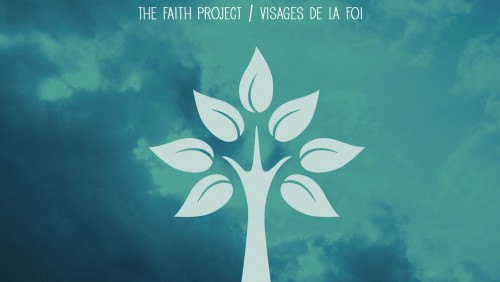
Download
Loading...

Download
Loading...
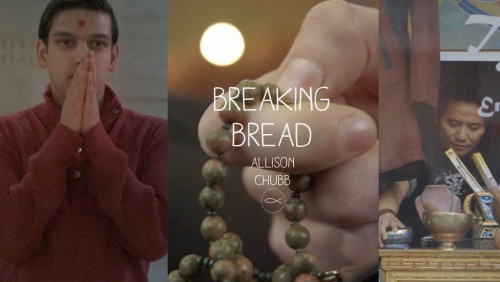
Download
Loading...

Download
Loading...
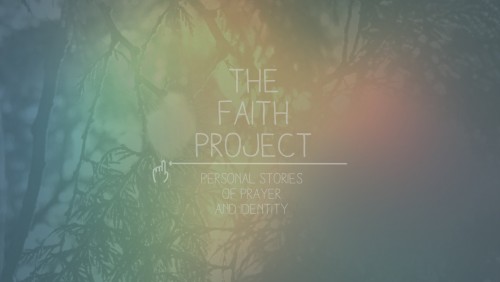
Download
Loading...
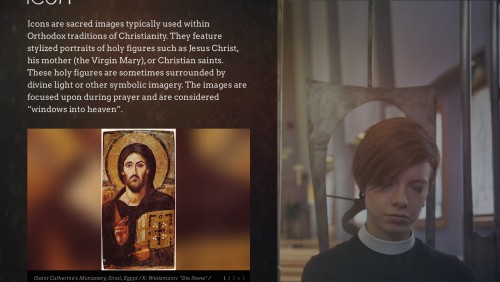
Download
Loading...
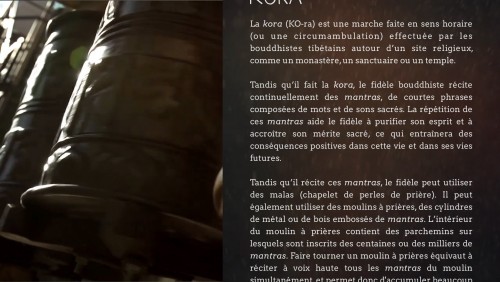
Download
Loading...

Download
Loading...
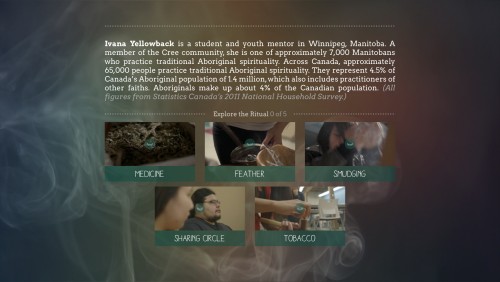
Download
Loading...
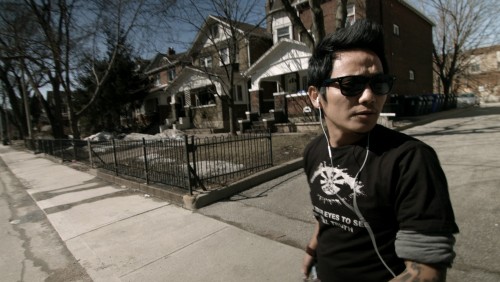
Download
Loading...
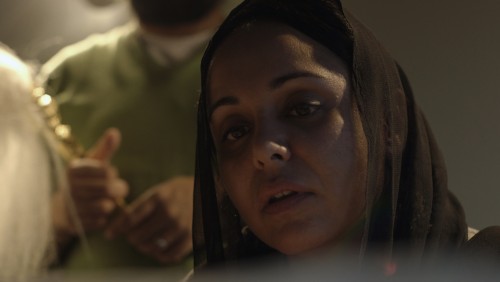
Download
Loading...
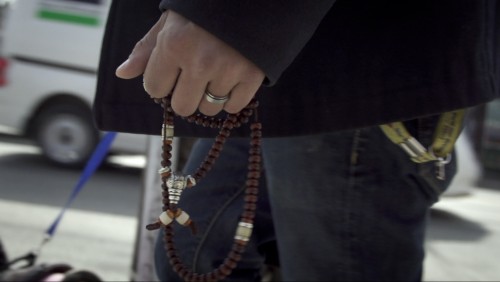
Download
Loading...
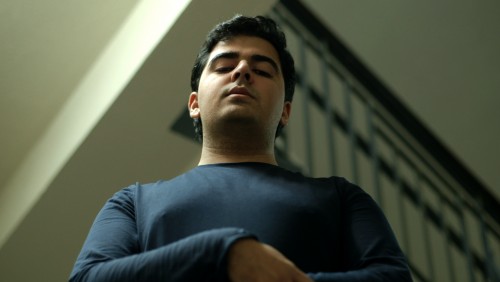
Download
Loading...

Download
Loading...
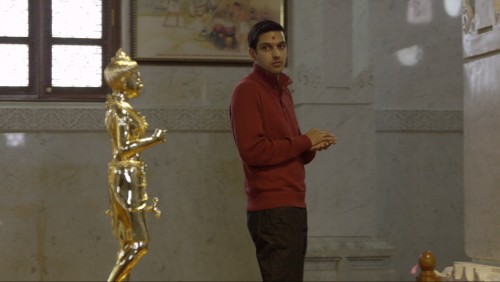
Download
Loading...
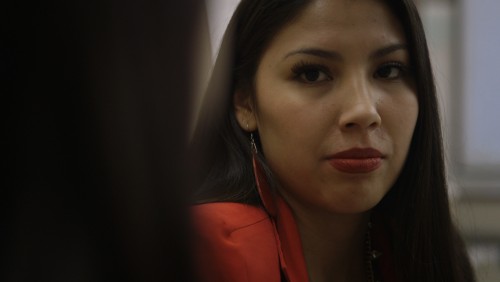
Download
Loading...
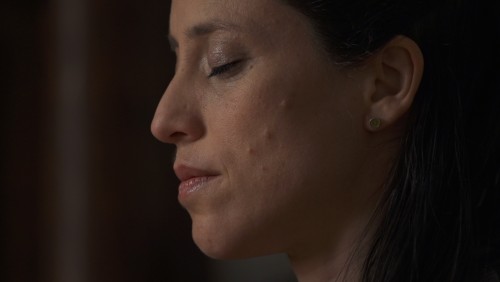
Download
Loading...

Download
Loading...
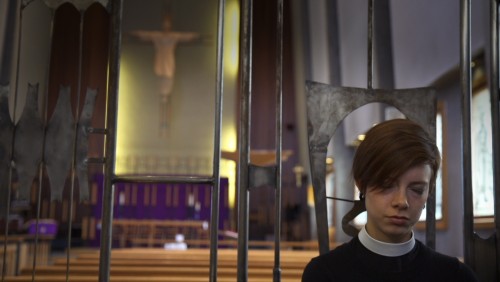
Download
Credits
A National Film Board of Canada Production
in collaboration with
the Canadian Race Relations Foundation
Directed by
Chris Romeike
Written by
Shiraz Janjua
Produced by
Gerry Flahive
Lea Marin
Director of Photography
Chris Romeike
Edited by
Chris Romeike
Associate Producer
Shiraz Janjua
Production Supervisor
Mark Wilson
Original music by
Jim Guthrie
Featuring
Aviva Chernick
Allison Chubb
Jetan Mistry
Preetinder Narang
Mohammed Kashif Pasta
Sonam Tsering
Ivana Lynne Yellowback
First Assistant Camera
Scott Burton
Paul Raymond
Assistant Editor
Darby MacInnis
Re-Recording Mixer
Aaron McCourt
IMPRINT MUSIC
Sound Recordists
Mike Filippov
Sanjay Mehta
Peter Kepkay
Igal Petel
Marvin Polanski
Production Assistants
Robert Cortes
Lisa Nelson
Jung-Sun Song
Technical Coordinator
Marcus Matyas
Production Coordinators
Andrew Martin-Smith
Rachel Punwassie
Centre Administrator
Josiah Rothenberg
Marketing Manager
Melissa Wheeler
Director, Institutional and Educational Markets, NFB
Kristine Collins
Head of Educational Content
Ross Johnstone
Education Specialist
Anne Koizumi
Education Guide Writer
Noorin Fazal
Executive Producers
Silva Basmajian
Anita Lee
For the Canadian Race Relations Foundation
Executive Director
Anita Bromberg
Project Manager, Interfaith and Belonging initiative
Suren Y. Nathan
Board Member
Rubin Friedman
Post House
Redlab Digital
DI Producer
Ahmad Ismail
DI Colourist
Walt Biljan
App Design and Development
Relish Interactive
Technical Director
Paul Pattison
Lead Developer
Jason Slater
Art Director
Jonathan Wong
Digital Producer
Ben McEvoy
Researcher
Celina K. Bell
Visual Researcher
Elizabeth Klinck
Copy Editor
Gillian Burnett
Research Consultants
Jonathan Hamilton-Diabo
Sadhu Nityavivekdas
Rabbi Aaron Katchen
Kulvir Singh Gill
Guru Fatha Singh Khalsa
Amjad Tarsin
Marco Mascarin
Hector Villar y Pacheco
Nilesh Mehta
Andrew Wesley
Archdeacon Bruce Myers
Thank You
The Multi-Faith Centre for Spiritual Study and Practice, University of Toronto
Richard Chambers
Adam Makarenko
Zita Prashad
Nadir Shirazi
Lauren Stein
Michael TorelliSimon Fraser University
Kamilah Charters-Gabanek
David Murphy
Baljinder K. Narang
Manpreet Singh
SAFAR: The Sikh Feminist Research Institute
Carlos Gouveia
Aaron Rotenberg
Evelyn Tauben
Ka Ni Kanichihk
Trina McKellep
St. John’s College, University of Manitoba
Amy Craddock
Ivan Froese
Dr. Christopher Trott
The Hub Pub
Karma Sonam Dargye Ling Temple
Tibetan Emporium and Entertainment
Gyaltsen Gyaltsen
BAPS Swaminarayan Sanstha
Shri Swaminarayan Mandir, Toronto, Canada
Sadhu Gunsagardas Swami
Sadhu Nityavivek Swami
Sandeep Pandya
Kapil Chothani
Dipan RavalInterfaith Youth Core
Kamilah Charters-Gabanek
Helios Design Labs
Deanne Hupfield
John Hupfield
James Orbinski
Stephen Scharper
Kate Vollum
We acknowledge the financial support of Inter-Action, the Multiculturalism Grants and Contributions Program of Citizenship and Immigration Canada, in the delivery of this project.
THE FAITH PROJECT
A National Film Board of Canada production in collaboration with the Canadian Race Relations Foundation
Media Relations
-
About the NFB
The National Film Board of Canada (NFB) is one of the world’s leading digital content hubs, creating groundbreaking interactive documentaries and animation, mobile content, installations and participatory experiences. NFB interactive productions and digital platforms have won over 100 awards, including 21 Webbys. To access this unique content, visit NFB.ca.
About the Canadian Race Relations Foundation (CRRF)
The Canadian Race Relations Foundation (CRRF) is Canada’s leading agency dedicated to the elimination of racism and the promotion of harmonious race relations in the country. Created as part of the historic Japanese Canadian Redress Agreement, the CRRF’s governing legislation was proclaimed in 1996, and its doors opened in 1997. Its mission is to provide independent, outspoken national leadership, to inform national policies and public conversations, and to act as a resource and facilitator to advance Canadian identity in the pursuit of positive race relations, equity, fairness, social harmony and dignity for all Canadians.
www.crrf-fcrr.ca
About Interfaith and Belonging: A Civic Education and Engagement Initiative
Funded by the Department of Citizenship and Immigration Canada, the Interfaith and Belonging initiative facilitated a national dialogue on interfaith cooperation and communication, promoted civic education and engagement, and provided the necessary tools to strengthen belonging. It effectually constructed a national framework for dialogue between and among groups of different ethno-cultural and faith-based communities and helped to strengthen their participatory role in Canadian society. Through active participation and community engagement, the project promoted Canadian democratic values, diversity, and traditions, and worked with communities in understanding our rights and responsibilities and how best to encourage a deeper sense of belonging to Canada. This work now continues through the Our Canada Project.